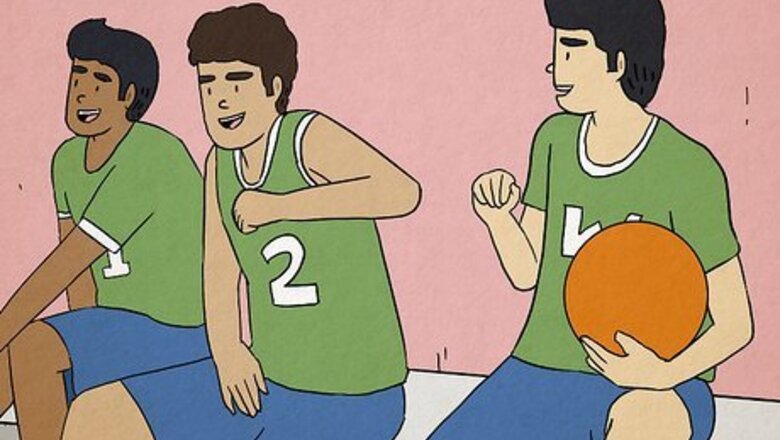
views
- Common school stereotypes include the jock (an unintelligent athlete) and the nerd (a socially awkward genius).
- Stereotyping is dangerous because it makes students feel like their performance will reflect the skill of their entire group (their clique, gender, race, etc).
- One of the most effective ways to challenge stereotyping is to include a more diverse array of role models in the classroom, from scientists to authors.
Common High School Stereotypes in Media
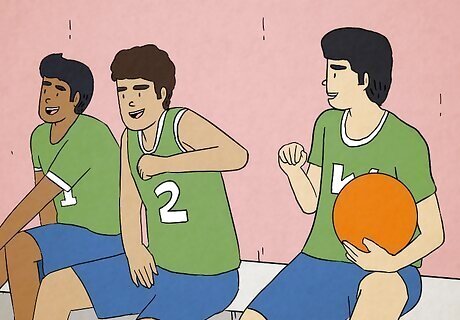
The Jock The jock is a student-athlete who hangs out among other athletes. They usually play an intensely physical sport like football or basketball and exude a lot of machismo. People tend to think jocks lack intelligence and only pass their classes because coaches need them for sports. They’re also often portrayed in pop culture as popular kids and bullies. Examples: Andy from The Breakfast Club, Joey from 10 Things I Hate About You, Slater from Saved by the Bell

Nerd Nerds are often portrayed as hyperintelligent students who lack social skills and are picked on by more popular students because of it. Their high school experience is portrayed as fairly quiet (most of it tends to be spent doing homework). However, the cliche is that their hard work and brains pay off later in life, making them uber-rich and successful. Examples: Sheldon Cooper from The Big Bang Theory, McLovin from Superbad, Napoleon from Napoleon Dynamite
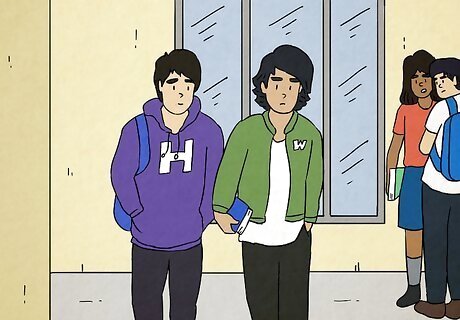
Cool Kid While still a cliche, the “cool kid” tends to be one of the more diverse stereotypes. They’re usually attractive, well-dressed, and wealthy to some degree, and everybody seems to want to be their friend. They can be stuck-up and look down upon less-popular kids (if the person’s a girl, this usually overlaps with the “Queen Bee” stereotype) or extremely friendly (their kindness boosts their popularity). Sometimes, they challenge their school’s authority; sometimes, they’re super involved in school clubs. Examples: Claire from The Breakfast Club, Regina from Mean Girls, Steve from Stranger Things

Artsy Kid The artsy kid is an intensely creative, flamboyant student with a passion for acting, music, dance, or all of the above. Usually, the “artsy kid” stereotype falls into the “band geek” or “theater kid” cliche. They’re portrayed as being hyper-focused on their craft and, though they’re not the most popular among the school at large, they have a tightly-knit group of friends (usually other artsy kids) who love and adore them. Examples: Michelle from American Pie, Rachel from Glee, Sam from The Perks of Being a Wallflower

Troublemaker The troublemaker is an outcast of some sort who wreaks havoc on school staff and sometimes even fellow students. Sometimes, they’re portrayed as a lovable class clown or harmless prankster whose adored by their fellow students, but whose shenanigans get them in trouble with teachers. Sometimes, they’re more of a misunderstood loner or bully who lashes out at anyone who tries to get close to them. Examples: Bender from The Breakfast Club, Ferris from Ferris Bueller’s Day Off, Warren Peace from Sky High
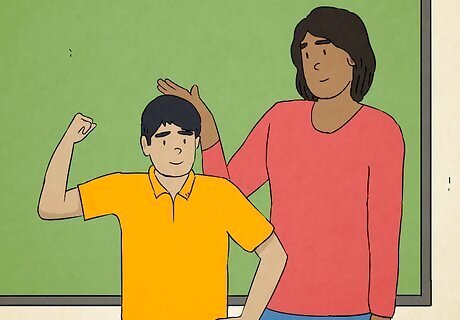
Overachiever The overachiever stereotype is exactly as it sounds: a student who goes above and beyond to an almost comic degree and makes the rest of their classmates look bad in the process. They’re extremely involved at their school (multiple clubs and leadership positions) and are portrayed as having a promising future ahead of them (usually several college acceptances). They may also be viewed as a know-it-all or “teacher’s pet.” Examples: Tracy Flick from Election, Molly from Booksmart, Max Fischer from Rushmore
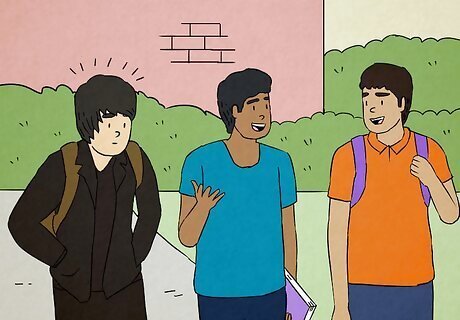
Misfit Emos, goths, punks. There are many different iterations of the “misfit” stereotype. What they all have in common is their dislike of authority and other, more “mainstream” students. They’re often portrayed as angsty, listening to angry music, wearing all-black outfits, and sporting strange, multi-colored haircuts. They also tend to be viewed as hyperemotional, loving poetry and other dark art forms. Examples: Allison from The Breakfast Club, Ellie from Degrassi, Jade from Victorious
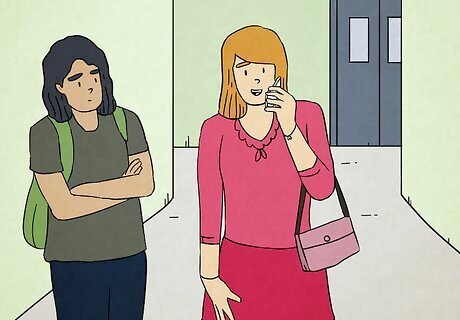
Dumb Blonde Usually female, the “dumb blonde” is a stereotype that extends beyond the walls of high school. In the context of school, however, the dumb blonde is usually a part of the popular clique but is never taken as seriously by her friends because she’s not as sharp. She often overlaps with the “Cheerleader” stereotype. Sometimes, she’s portrayed as stuck-up. Sometimes, she’s portrayed as having a heart of gold despite her less-than-stellar intellect. Examples: Karen from Mean Girls, Cher from Clueless, Brittany from Glee

Slacker Like the troublemaker and misfit, the slacker is a student who doesn’t take school or authority super seriously. However, unlike the other two, the slacker is rarely seen rebelling against or confronting anybody; they’re too laid back. Sometimes, the trope portrays an uber-bright student who’s achieving below their potential. Others, they’re more of a lazy stoner type who only seems to care about skateboarding and hanging out with friends. Examples: Jeff Spicoli from Fast Times at Ridgemont High, Daniel from Freaks and Geeks, Lloyd from Say Anything

Goody Two-Shoes The goody-two-shoes refers to a prudish character who doesn’t get out much, usually because they grew up with strict parents or are deeply religious. They’re usually portrayed one of two ways: stuck-up and judgemental of anybody who doesn’t abide by their intense moral code, or extremely kindhearted and pure. Some students admire their virtue, while others encourage them to cut loose. Examples: Marianne from Easy A, Millie from Freaks and Geeks, Darcy from Degrassi
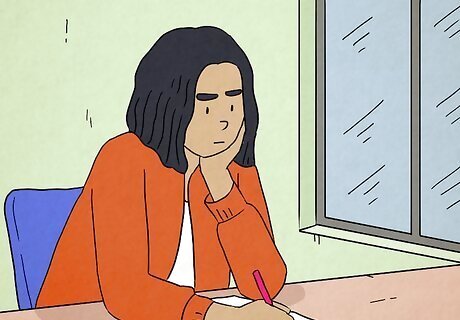
Average Kid Unremarkable but relatable, the “average kid” doesn’t have any one trait or interest that makes them stand out. They tend to be on the shyer side and, because they don’t have any one quality to gravitate towards, they’re often floaters who don’t necessarily have a clique to hang out with. Similar to an “everyman” or “girl next door,” they’re usually the protagonist in books, movies, and TV shows because a lot of teens can relate to them trying to figure themselves out. Examples: Mary Jane from Spider-Man, Lexi from Euphoria, Greg from Me and Earl and the Dying Girl
Real-Life Generalizations About Students
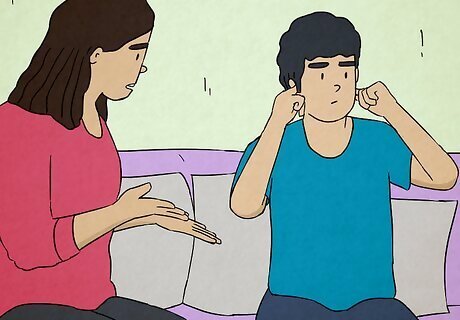
All teens hate authority. Oftentimes, teenagers are viewed by society as angsty risk-takers who hate their parents. People think that they’re likely to rebel against and disrespect adults almost automatically. This causes authority figures to become more authoritarian and impart more rules on them, which limits their ability to communicate effectively, makes them feel misunderstood and resentful, and continues this cycle. The truth: teenagers only lash out when they feel like their autonomy is threatened. Most high-school-aged students want to feel valued, and seen as capable of handling things on their own. When this is threatened, they feel disrespected and find it hard to collaborate or engage.
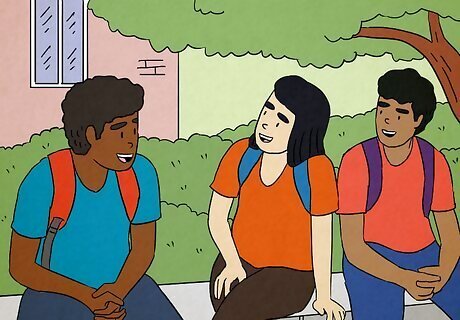
All middle schoolers are emotionally immature. When students reach middle school, their brains develop at a staggering pace, creating millions of new neural connections every second. Because of this, educators tend to underestimate middle schoolers. They view them as pre-adolescents who are incapable of dynamic problem-solving. This causes them to oversimplify middle school education and prevents middle schoolers from more complex, active methods of learning. The truth: While middle schoolers’ brains are still developing, they start to develop their own opinions and worldview at this age. They want to be active members of their community and engage in meaningful discussions. The more they have access to hands-on methods of teaching, the more successful they’ll be.
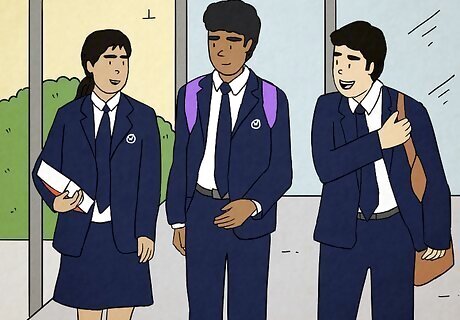
All private school students are rich and spoiled. A lot of people consider private schools to be their own separate entity from public middle and high schools. They view private school students as stuck-up and wealthy, ungrateful for the extra resources their school has, and private school parents as coddling. The truth: a lot of private school students are middle class or poor. Several are on scholarship and their families work extra jobs to afford the tuition so their child can have access to a better, safer education. In addition, these private school students feel outcast from their more affluent peers, and being grouped in with them only creates more role confusion.
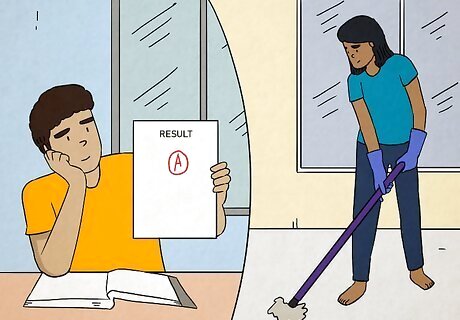
Boys are more high-achieving while girls are more social. Unfortunately, gender stereotypes are highly prevalent in most schools, as well. From an early age, boys are encouraged to pursue athletics, mathematics, and to think on their own while girls are guided towards cleaning, language arts, and socializing with their peers. In addition, a lot of the role models teachers use for lessons (from science to history) are male, which can be discouraging for young women. The truth: All students should be encouraged to pursue their individual passions, regardless of gender. There are plenty of award-winning female scientists and authors that can be incorporated into the curriculum to show offer students a more diverse range of perspectives and inspire everyone.
How Stereotypes Harm Students

Stereotypes put pressure on teens to represent their groups. When a student is stereotyped, they feel obligated to perform in a way that properly represents their group, whether it’s a clique (like jocks, artsy kids, etc.) or, more often and more seriously, their race and/or gender. This pressure is called a stereotype threat. The more pressure a student feels, the more stressed they become which makes them more likely to perform poorly academically and socially. For example, if Susie is about to take a math test and her teacher has enforced some gender stereotypes in the classroom (focusing more on the boys when referring to careers in math, always saying “he” when referring to a doctor or engineer), she may feel like, if she fails, it will reflect poorly on all the girls. This pressure may cause her to make more mistakes on her exam.

Stereotypes limit students from exploring their passions. When students are limited to thinking they must behave a certain way and only like certain activities, they’re less likely to try new things. The less likely they are to try new things, the fewer opportunities they provide themselves which limits their chances to discover new hobbies/potential careers and prevents them from living a more successful, high-achieving life. For example, if Ryan wants to play baseball but is seen as a goth, he may not try out for the team out of fear he’ll be seen as portraying his goth friends or judged by the other baseball players. Studies show that, if students are stereotyped early in school, they’re likely to carry these perceived limits into adult life.

Stereotypes form harmful cliques. Cliques (groups like jocks, band kids, rebels) aren’t necessarily a bad thing. They allow students to find people with similar passions/interests and reinforce their sense of belonging. However, when people start to view these cliques as stereotypical, rigid groups, it can cause outside people to behave cruelly to members of the clique and put pressure on students to conform to whatever their clique thinks.
How to Challenge School Stereotypes

Create a safe space for students to explore. Whether you’re a teacher, student, or parent, the best way to discourage students from stereotyping each other is to encourage them to try new things. Promote classroom inclusion by giving positive feedback whenever a student steps out of their comfort zone. In addition, offer multiple forms of enrichment like music and sports so every student has an opportunity to excel. For example: As a Teacher: Incorporate regular discussions about diversity and inclusion into your classroom to encourage students. If you feel like you don’t know enough about these subjects, (ask your teacher to) bring in an expert. As a Student: Invite your classmates to join one of your clubs and try to create friendships with the people who show up. As a Parent: If your child considers themself an artsy kid but shows an aptitude for athletics, encourage them to try out and look into coaches to help them improve.

Use inclusive language and voice disapproval of prejudice. Pay attention to the words you use to make students feel less excluded. Instead of ‘boys and girls,’ you might just say ‘students’ or ‘folks’ to honor those who may be questioning their gender identity. In addition, interject whenever you hear people stereotyping and try to offer helpful counterexamples. As a Teacher: Incorporate a few lessons on stereotyping into your curriculum. Have an in-depth discussion with your students about popular stereotypes in media and history and allow them to openly voice their feelings about it. As a Student: If you hear your friends using insensitive terms, kindly but firmly correct them and explain why you feel their language is hurtful. As a Parent: Consider using gender-neutral language like “children” rather than “son” or “daughter” and avoid making assumptions about their sexual preference.
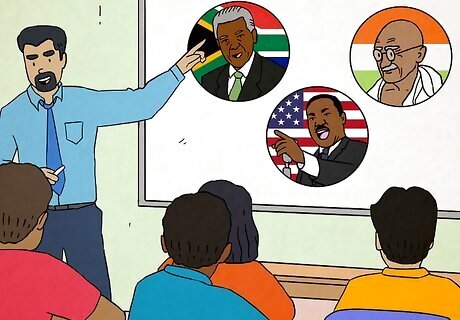
Offer a range of role models and representation. When discussing famous writers, scientists, and historians, include people of varying ethnicities, religions, and gender identities to demonstrate that your student can succeed in this field, regardless of what background they come from. Some easy ways to promote diversity in your classroom: As a Teacher: Ensure your curriculum covers multiple cultures, take field trips to unique cultural sites, and invite guest speakers from unique backgrounds to talk to/inspire your students. As a Student: Ask your student government to host regular open forums where all students can drop by and voice their opinions without judgment. As a Parent: Talk to your school’s faculty about areas you think the school could be diversified. If you come from a unique background, volunteer to share your story or get administration in touch with leadership from your community.
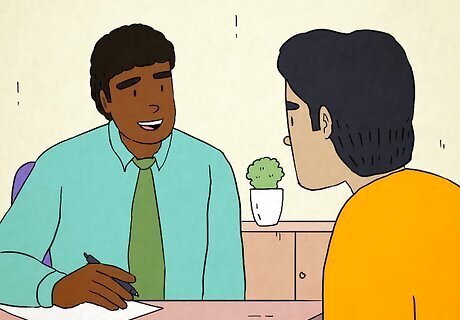
Get to know students on an individual level. Avoid making assumptions about people, and get to know your students or classmates one-on-one. Ask questions about their interests and goals rather than their background. Seeing students for who they are rather than their clique, gender, race, or religion is the easiest way to avoid stereotyping. As a Teacher: Offer your students a “get-to-know-you” survey that asks questions about their goals, hobbies, and lives so you have concrete information to connect with them over. As a Student: Try to make new friends during breaks. Talk to at least one new person every day and avoid sitting at the same place at lunch. As a Parent: Invite your kids’ friends over for dinner so you can develop your own relationship with them, rather than just hearing about them through stories.













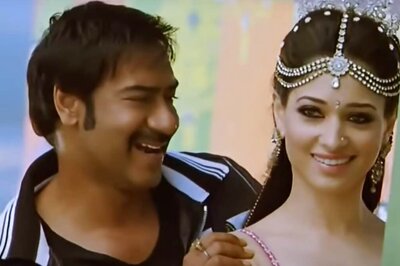





Comments
0 comment